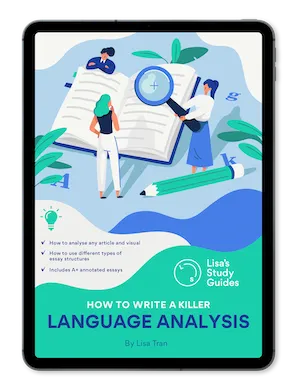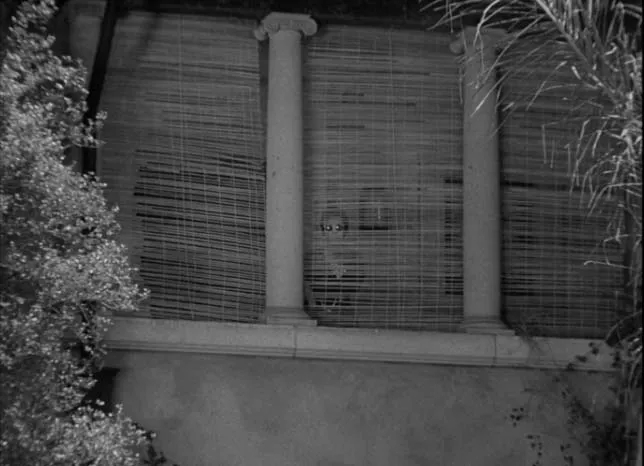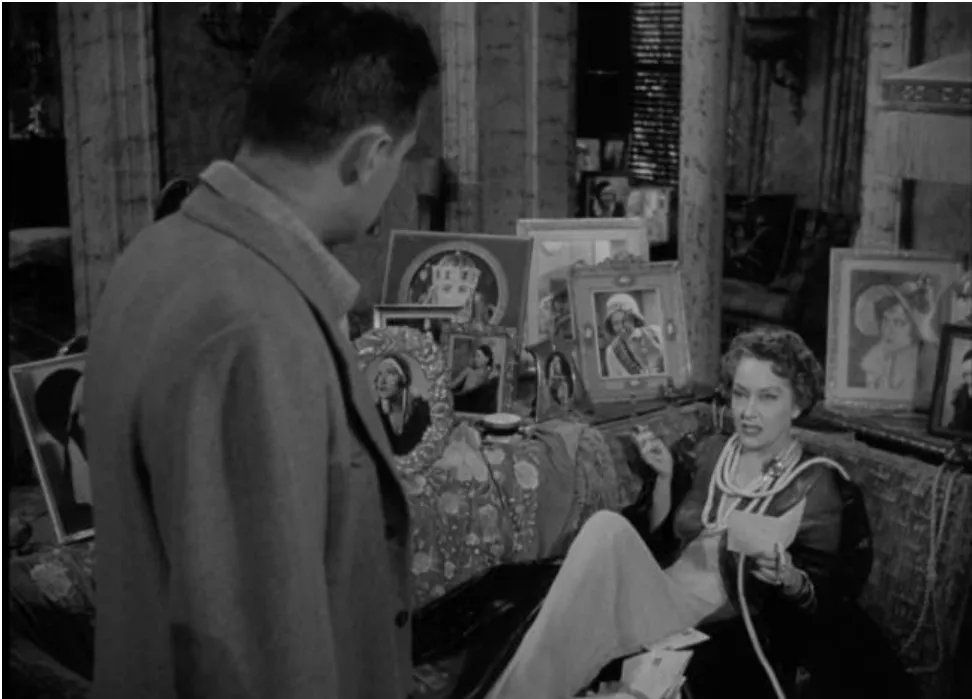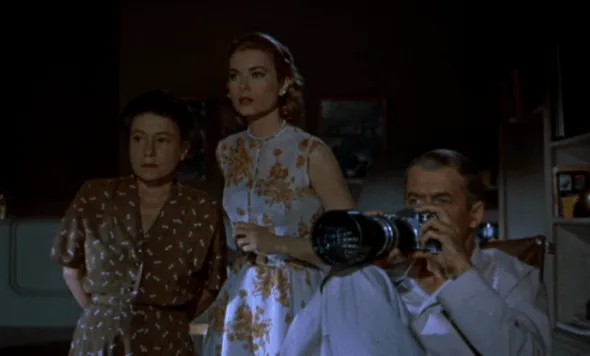The White Girl is usually studied under the Text Response component of the Australian curriculum. For a detailed guide on Text Response, check out our Ultimate Guide to VCE Text Response.
In The White Girl, author Tony Birch introduces a new generation of young readers to the lived experiences of countless Aboriginal and Torres Strait Islander people throughout Australia’s racist and colonial history. The novel (which documents the perils, hardships and injustices of life for Aboriginal people in the 1960s) champions the values of pride, resistance, compassion and love, all while condemning the legacy of systemic oppression and subjugation which continue to stain Australia’s national identity to this day.
To better understand the key ideas at the heart of the text, we’ll be breaking down the historical and cultural context surrounding the novel and introducing some of its more tricky concepts.
Contents
- Institutional Racism and Oppression - What Is It?
- Colonisation and Dispossession
- Forced Removals and The Stolen Generation
- Law and Justice
Institutional Racism and Oppression - What Is It?
Virtually every conflict that the protagonists of The White Girl confront is in some way or another a manifestation of the pervasive racism which underlies Australian history. At its core, the novel is a response to an enduring legacy of racial inequality and the resultant trauma that Aboriginal people continue to suffer.
There are certainly many instances throughout the novel where characters demonstrate overt acts of what is often called individual or interpersonal racism. This is what students often imagine when they hear the word racism, and it refers to individual interactions in which one person might harass, abuse or intimidate others based on their race. You might remember, for example, the school children who paint Henry Lamb’s face black while shouting racial slurs, or Bill Shea’s sister who throws stones at Odette. However, this isn’t the only kind of racism that exists, and for the most part, it’s not the main focus of The White Girl. Beyond just individual acts, Birch directs us to consider a more insidious, wide-scale and deeply embedded type of discrimination: that is, institutional or systemic racism. In an article for the National Indigenous Television Channel at SBS, Indigenous journalist Bronte Charles defines the term as follows:
Institutional racism, also known as systemic racism, describes the existence of racism in the structures that make up modern society. It manifests when institutions, organisations and governments directly or indirectly discriminate against an ethnic group. It systematically disadvantages those groups and further marginalises them within society.
In speaking to contemporary readers, it is clear that Birch wants us to redefine our understanding of racism beyond the bounds of individual beliefs and actions, and instead consider the ways in which societal and cultural systems of authority systematically oppress people based on their race, leading to far more devastating and long-lasting impacts. In The White Girl, these authorities can be seen in the federal government, the Aborigines Welfare Board, the police and the Church - all of whom represent either a direct threat to Odette and Sissy’s continued happiness or play some role in the broader historic injustices perpetrated against Aboriginal Australians. Systemic racism and its effects play out in several significant ways throughout the text, some of which we will explore below.
But first, some context: how did we get here in the first place?
Colonisation and Dispossession in The White Girl
As you might have learned in History class, Australia was first invaded by British settlers in 1788, beginning a long history in which the invaders captured and occupied Aboriginal lands to establish colonies, appropriated natural resources and killed many Indigenous peoples, either directly or indirectly (for example, through the introduction of new diseases). This process was justified by the racist assumption that Aboriginal people and their culture were inferior to the British, therefore permitting the British to do what they wished without consequence. Today, we refer to the process by which these colonists seized control as colonisation and use the word dispossession to refer to the fact that Aboriginal people had their lands systematically stolen from them.
As with all modern Australian history, the events of The White Girl play out in the wake of these brutal processes, and their effects can be felt throughout. As early as the first page of the novel, Birch establishes that even in the 1960s, the legacies of colonisation and dispossession continue in and around Deane, fundamentally shaping the environment in which Odette and Sissy have lived their entire lives. For example, let’s consider the following quote:
[Odette] watched as the kite hovered above Deane’s Line, a narrow red dirt track skirting the western boundary of town. The Line, as the track was commonly known, had been named in honour of the early squatter and land speculator, Eli Deane. Deane carried the blood of so many Aboriginal people on his hands it could never be scrubbed away, not from the man himself or the town that carried his name. The Line had been drawn a century earlier to separate the Aboriginal people incarcerated on the nearby mission from the good white settlers of Deane. A government regulation deemed that any Aboriginal person living west of Deane’s Line was a resident on an Aboriginal reserve. (p. 1)
This quote immediately illustrates the deep and fundamental chasm which separates (in this case, literally) the lives and experiences of Aboriginal and white Australians, both in terms of their rights and treatment by the government, and how they are framed in the public consciousness. Not only do the white residents of the area possess freedoms that their Aboriginal neighbours are denied, but they are also viewed as deserving of this unjust privilege. Notice Birch’s use of sarcasm, as he refers with italics (formatted in bold on this blog) to the ‘good white settlers’ of the area. We know from this passage that Deane was “settled” through violence and the unjust incarceration of the local indigenous people and yet, as becomes clear throughout the novel, these injustices are rarely acknowledged or condemned. Instead, again and again, the violence and subjugation exacted by white perpetrators and institutions of authority against Aboriginal people is normalised, excused and sanctioned. This is echoed in the words ‘good white settlers’, which satirise the way that many people in power have historically utilised language to minimise the violent harm that these same ‘settlers’ committed.
The various inequalities referred to in this passage are examples of both systemic racism in action and continuations of the same racist beliefs that justified Australia’s colonisation. In fact, Deane itself, with its legacy of violence and inequality, can be considered a symbol of this same deeply rooted racism throughout the country. Just as Deane is marked by the stains of its founders’ violence, the various systems of authority and control which Odette and Sissy must navigate throughout the novel (most notably, the police and the welfare system) have also been built upon racist ideology; they, too, have blood on their hands.
The White Girl also considers the impact of land dispossession from an Aboriginal perspective, as in the quote below, where Odette reflects on the loss of the native lands around Deane.
[…] Sissy stopped to look down at the riverbed. ‘I wish there was water in this river, Nanna,’ she said. ‘When the weather is warm I could swim the same as you used to do in the old days.’
‘Oh, I wish you could too. That water here was once the clearest you would ever see,’ Odette lamented. ‘The fish and eels would be swimming with us. The old people, they knew the river and its stories from the time it had run free. All along this way the water overflowed into the old billabongs. Now all we have is the muddy bottom and the frogs,’ Odette said. ‘There’s hardly a drop of water left for them.’
‘What happened to all the water?’ Sissy asked. ‘Tell me that story.’
‘There’s not much to tell. White people got even greedier than we thought possible. That’s what happened.’ Over the years Odette had witnessed local government officials seizing more and more land and then filling in old billabongs and covering the muddy ground with screening from the mine before selling off the land.
‘Between the farmers and the politicians we were left with nothing. Our people have been hurting since, […] Because the river, all the rivers, we need them. And they need us.[…]’ (pp. 51-52)
Birch suggests that the harm that colonisation has wrought on both the land and First Nations people is inherently intertwined, drawing a link between land dispossession and widespread trauma. For Aboriginal Australians, connection to Country is deeply cultural, spiritual and personal, and this quote reflects both how this connection once flourished in ‘the old days’ and how its forced severance has left great scars on Odette’s people and the land itself. Without the wisdom and respect of its traditional caretakers, the land has starved and wasted away under the greed of the white authorities. This decay mirrors the suffering and trauma of Indigenous peoples, who have been similarly controlled, brutalised and commodified under colonialism.
Now that we’ve considered the background behind the novel, let’s take a look at some of the main forms of institutional racism it tackles within its pages.
Forced Removals and The Stolen Generation in The White Girl
By far the biggest source of tension throughout the text is the ever-present threat of Sissy’s forced removal from Odette. From the mid-1800s to the 1970s, both federal and state governments forcibly removed thousands of Aboriginal and Torres Strait Islander children from their families and communities, resulting in what we now call the Stolen Generation. It is estimated today that during this time, between one in ten and one in three Aboriginal children were stolen. In particular, mixed-race children like Sissy who had some white ancestry, often referred to as “half-castes”, were disproportionately targeted and often placed in white families where it was hoped that they might be assimilated into white society. These removals were predicated on racist assumptions and beliefs about the supposed superiority of white society and culture and further marginalised Aboriginal and Torres Strait Islander people across the country.
This process was naturally deeply traumatising to all affected, and its effects still live on to this day. Child victims of the Stolen Generation were culturally dispossessed, losing connection to not only their families and communities but also to Country and their culture, spirituality, language and identity. This has resulted in a long legacy of alienation and isolation for not just the stolen children, but their descendants, many of whom deal with intergenerational trauma as a result of the policies. The families and relatives of the stolen children also experienced significant trauma at the loss of their loved ones, with many never recovering after their children were taken. Overall, the effects of these policies have touched virtually every Aboriginal Australian, leaving an indelible scar. Birch himself is quoted as saying, ‘I’ve never met an Aboriginal person who doesn’t have a story of that sort of loss [through the stolen generations] somewhere in their family. No Aboriginal person I know is completely intact because of that…Everyone is missing someone, and someone in that family has got to carry that repository of memory.’ (Daley, 2019).
Indeed, in The White Girl, the impacts of the Stolen Generation are visible around every corner, and the threat of Sissy’s removal drives the central narrative. In the course of Odette and Sissy’s journey, Birch presents us with various victims of the policy, all of whom display the scars of their ordeal.
One example of such a character is Delores Reed, the mother whom Odette meets at a church in Gatlin. Delores’ two daughters are stolen from her and placed first in a church in Gatlin, and then in white families. Their removal causes their mother significant psychological distress, leading her first to a period of hospitalisation and later to suicide, as we can see in the following quotes.
Odette observed Delores gripping the edge of the table with both hands, her eyes sharp and her cheeks reddening.
‘The first time the Welfare lady set eyes on my babies,’ Delores said, ‘I knew I had no hope of keeping them.’ She took one hand away from the edge of the table and slammed it against her chest, alarming Odette. ‘From that day on, that bitch followed us around like a bloodhound. My eldest girl, Colleen, she was the first to go. […]’ (p. 80)
‘[…] After Iris was taken away I was put into one of those hospitals. You know? For sick people? And by then I was mad.’ Delores had exhausted herself. She could hardly look at Odette. (pp. 81-82)
‘The church authorities, about eight years ago, they decided to move a group of the girls away, including Mrs Reed’s daughters.’ […] ‘She wasn’t told what had happened to them until after they’d gone. It was more than a week after when the priest came to her. It was too late by then. There was nothing she could do.’
‘Taken? Where to?’ Odette asked.
‘To the city. A long way to travel for a woman without means.’ […] ‘She lay in the room there for days on end, unable to move. It broke her, what they did to her.’
Odette dreaded her next question, but had to ask. ‘What happened to Delores?’
Robert looked up to the sturdy limb above his head. ‘Delores took her own life.’ (p. 85)
Along with other characters like Wanda and Jimmy Brown, Delores demonstrates the human cost of systemic racism, representing the untold damage that the Stolen Generation wreaked upon countless Aboriginal families. In many ways, she is also a narrative foil to Odette, representing what could befall her if Sissy were to be successfully taken by the authorities.
Speaking of authority, …
Law and Justice in The White Girl
Throughout the novel, Birch makes it clear that in 1960s Australia, the law and legal system were designed to marginalise and control Aboriginal Australians while upholding the pre-existing systems of power that benefit white citizens. In other words, law and justice - and the authorities who enforce them - represent institutional racism over order and protection.
The White Girl demonstrates that the law denies even basic rights and freedoms on the basis of race: not only are Aboriginal Australians not considered citizens, but under the Aborigines Protection Act, they are unable to move freely from place to place and are denied legal custody of their children. Instead, this custody is afforded to the Aborigines Welfare Board and to guardians like Sargeant Lowe, who could at any time threaten to remove children from their families without consent. To even be considered for an exemption from these rules, Aboriginal residents must in some ways give up even more of their freedoms and subject themselves to often humiliating and degrading conditions, as we can see in the following conversation between Jack and Odette:
‘[…] This is a certificate of exemption. It means that I can go anywhere I like, when I like. Even across the border. With some rules, of course,’ he offered as a cautionary note.
[…]
Jack listed the orders he was subject to, counting on his fingers as he went.
‘To start with, to get the certificate I needed to provide testimonials to the Welfare Board from reputable people. White people. I can live where I want and I can have a drink,’ he added, winking at the smiling Sissy. ‘But I can’t give grog to a blackfella. That’s rule number one, just about. And ...’ Jack hesitated and looked at Sissy.
‘And what?’ Odette prompted him.
‘And ... I can’t fraternise with Aboriginal people,’ he said, lowering his voice. ‘Unlawful association, they call it.’ He looked away, unable to hide his sudden shame. (p. 138)
Although an exemption from the Act ultimately helps Odette save Sissy, the exchange above demonstrates that even this exemption is built upon certain restrictions which function to further dispossess and disconnect Aboriginal people from their communities and identities. In a fundamentally unjust and unequal society, the law punishes marginalised people, even when it claims to help them.
The police are another clear example of this point throughout the novel. Both Sargeant Lowe and Bill Shea demonstrate the police’s systemic failure to protect and serve Aboriginal Australians, either through active persecution or neglect. Although Lowe is the far more obvious antagonist of the two, Birch is careful to demonstrate that the threat he poses is representative of a far larger systemic issue in wider society. As the following quotes indicate, it is his steadfast commitment to doing his job properly that makes him so dangerous:
He’d been in Deane for only a week, and with little to distract him he’d had time to examine the information on each Aboriginal person under his control, young and old. The station records revealed that in the decades following the town’s foundation, the blacks had been kept on a tight rein. The log book for the police cells indicated that a week rarely passed without an inmate from the nearby mission being locked up, from a period of twelve hours to several weeks, and for matters including trespassing, drunkenness, absconding and co-habitation with those of a superior caste.
Lowe also noted that in recent years the cells had rarely been used, and punishment more generally was almost non-existent. He had little idea of how Officer Shea spent his working day, but he was clearly not concerned with policing. Lowe was determined to bring about change. He would begin with auditing each of the Aboriginal children under his guardianship, with a view to deciding the best outcome for their future welfare. (p. 28)
Lowe straightened his back. ‘As the representative of the state, and as there is no longer a Justice of the Peace serving this district, all Aboriginal children come under my direct care. I am their guardian. It would be negligent of me to allow the child to travel outside the district.’ He leaned across the desk. ‘I’ve been meaning to talk to you about the ongoing welfare of the child. In fact, I will be speaking with all remaining coloured people under my control.’ Lowe glanced across at Bill Shea. ‘The whole business of native welfare has been neglected in this district for many years. I will not allow it to continue. Your people need certainty, just as we do, as officers of the Crown. (p. 104)
Although Odette, Sissy and the other Indigenous characters face hardship and adversity in many forms, ultimately the most consistent barriers to their freedom, self-determination and happiness are the very culture, systems and institutions of control in which they find themselves embedded. Through their stories, Birch paints a powerful picture of the harm that colonisation and continued widespread systemic racism have wreaked upon Aboriginal Australians and illustrates the importance of challenging systems that uphold inequality and marginalisation, even today.
Further Reading for The White Girl
If you’d like to read more about some of the topics discussed in this blog, here are some of the resources I referenced and/or used to deepen my own understanding of the text:
Bringing them home: Report of the National Inquiry into the Separation of Aboriginal and Torres Strait Islander Children from Their Families.
Institutional racism is at work in Australia. How does it affect Indigenous People?
Tony Birch on The White Girl: ‘No Aboriginal person I know is intact’




















.jpg)